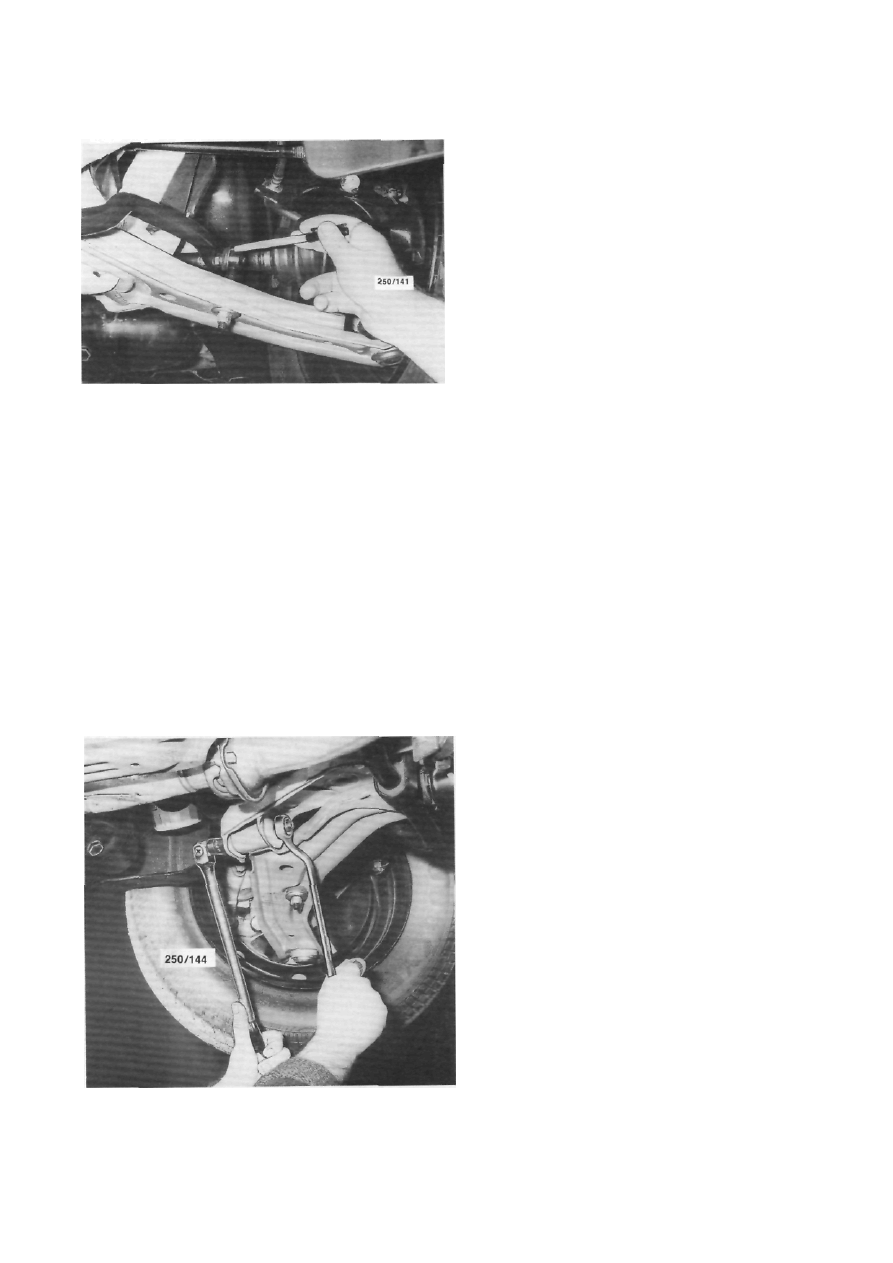Nissan PULSAR N13 Series / ASTRA LD Series. Manual - part 39

Front Suspension
157
Check the stabilizer bar links for wear and damage.
(3) Incorrect front end alignment: Check and
adjust the alignment as necessary.
(4) Defective stabilizer bar mounting rubbers or
worn link ball joints: Renew component as necessary.
(5) Weak or broken front coil spring: Renew
both springs as a matching pair.
(6) Broken or weak rear coil spring: Renew both
springs as matching pair.
(7) Drive shaft bent or distorted: Check and
renew as necessary.
(8) Tie rod end worn or damaged: Check and
renew as necessary.
(9) Control arm ball joint worn or damaged:
Check and renew as necessary.
(10) Control arm mounting bolts loose: Tighten
the control arm bolts.
(11) Wheel hub bearing worn: Check and renew
as necessary.
NOTE: As a quick guide to suspension unit
condition, bounce the front of the vehicle up
and down (one side at a time), the vehicle
should come to rest in a single movement. If
it bounces two or three times before stop-
ping, the suspension unit should be renewed.
If the from of the vehicle is tower on one
side than the other, remove the coil spring
and check its free length against a new
spring. If the spring is found to be unservice-
able it is good practice to install two new
springs as a matching pair. This also applies
to the springs on the rear of the vehicle.
2. DESCRIPTION
The front suspension is an independent type
comprising two Macpherson strut suspension units
mounted vertically on each side of the vehicle. The
lower end of the suspension unit is bolted to the
steering knuckle, which in turn houses the front hub
bearings. The steering knuckle pivots on the control
arm by means of a ball joint.
The control arm pivots at its inner ends on rubber
bushes.
A stabilizer bar is attached to both ends of the
control arms using ball joint links. The stabilizer bar
is attached to the front underbody by brackets and
mounting rubbers.
Each front suspension unit assembly comprises a
tubular shock absorber type suspension unit, sur-
rounded at the upper end by a coil spring. On top of
the coil spring is the upper mounting which attaches
to the underside of the inner mudguard panel. The
piston rod of the suspension unit is attached to the
centre of the upper mounting by a rubber mounted
bearing.
When a suspension unit is found to be defective it
is recommended that both suspension units be re-
newed as a pair.
Camber is adjusted by means of a cam on the
upper steering knuckle to suspension unit mounting
bolt.
The kingpin inclination and caster are set in
production and cannot be adjusted. Any variation in
these angles will be caused by worn or damaged
components.
3. STEERING KNUCKLE
Special Equipment Required:
To Renew Wheel Bearing — Press and press plates
and suitable tubes and mandrels
To Check Hub End Float — Dial gauge
TO REMOVE AND INSTAL
( 1 ) Raise the front of the vehicle and support it
on chassis stands. Remove the front wheel.
Checking the control arm bolts for security.